You’ve decluttered your home, great! But the real question is what happens after? How can we keep our home nice and tidy, without the clutter creeping back in?
The first answer to this question is to know the purpose behind our minimalist journey because that will keep us focused on truly important things. But there is another layer to this, and I want to talk about it here.
It has less to do with the mental aspect and more with reorganising our home in a way that we feel satisfied and happy so that adding more unnecessary stuff to our lives doesn’t even cross our mind. So let’s jump right in…
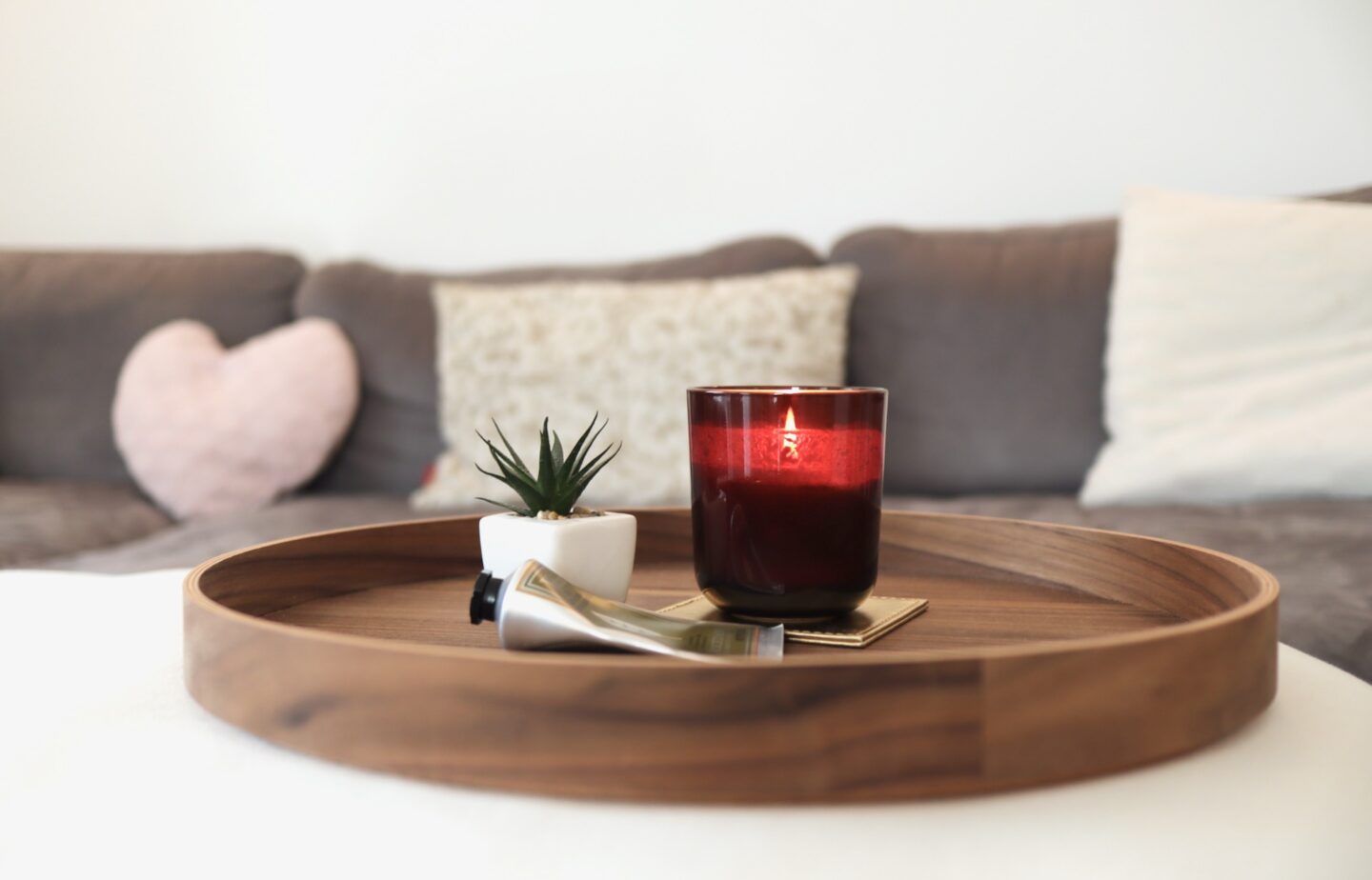
One of the biggest reasons I love decluttering is that it frees up so much space! In our mind, rooms, office, drawers, schedules and so on. But that can also be a bit of a downside if we’re not careful.
The problem with emptiness is that we humans have the need to complete things. Imagine doing a puzzle with a missing piece. Despite it being frustrating, it also leaves us with the feeling that we haven’t completed the job, even though it’s just one tiny piece.
The same goes for everything else. Once we see that something is half-empty or empty, we have a strong urge to fill it. We want to decorate the empty wall, fill out the empty shelf or add items to the empty wardrobe.
That is why it’s important to talk about this part of human instinct because it’s closely connected to minimalism and decluttering.
When we moved house we suddenly had more space and even though we already simplified our lives, I noticed that things started creeping back in and I couldn’t understand why.
I perceived myself as a conscious shopper, and from what I could tell, I didn’t buy anything out of the ordinary – just some home stuff; the cushions, a fruit bowl, soap dispensers, and a few items of clothing here and there.
But when I started feeling stressed again, I knew something has gone wrong. We quickly realised another decluttering session was in order, and to no surprise, we felt much better after doing it.
But I still didn’t like that this happened and that money was wasted, so I wanted to understand why we did it, and that lead me to discover the big problem with empty spaces.
The good news is, that even though this behaviour is our human instinct, we can find ways around it, instead of fighting it. And here are 4 super useful things you can do after decluttering, that worked wonders for our home.
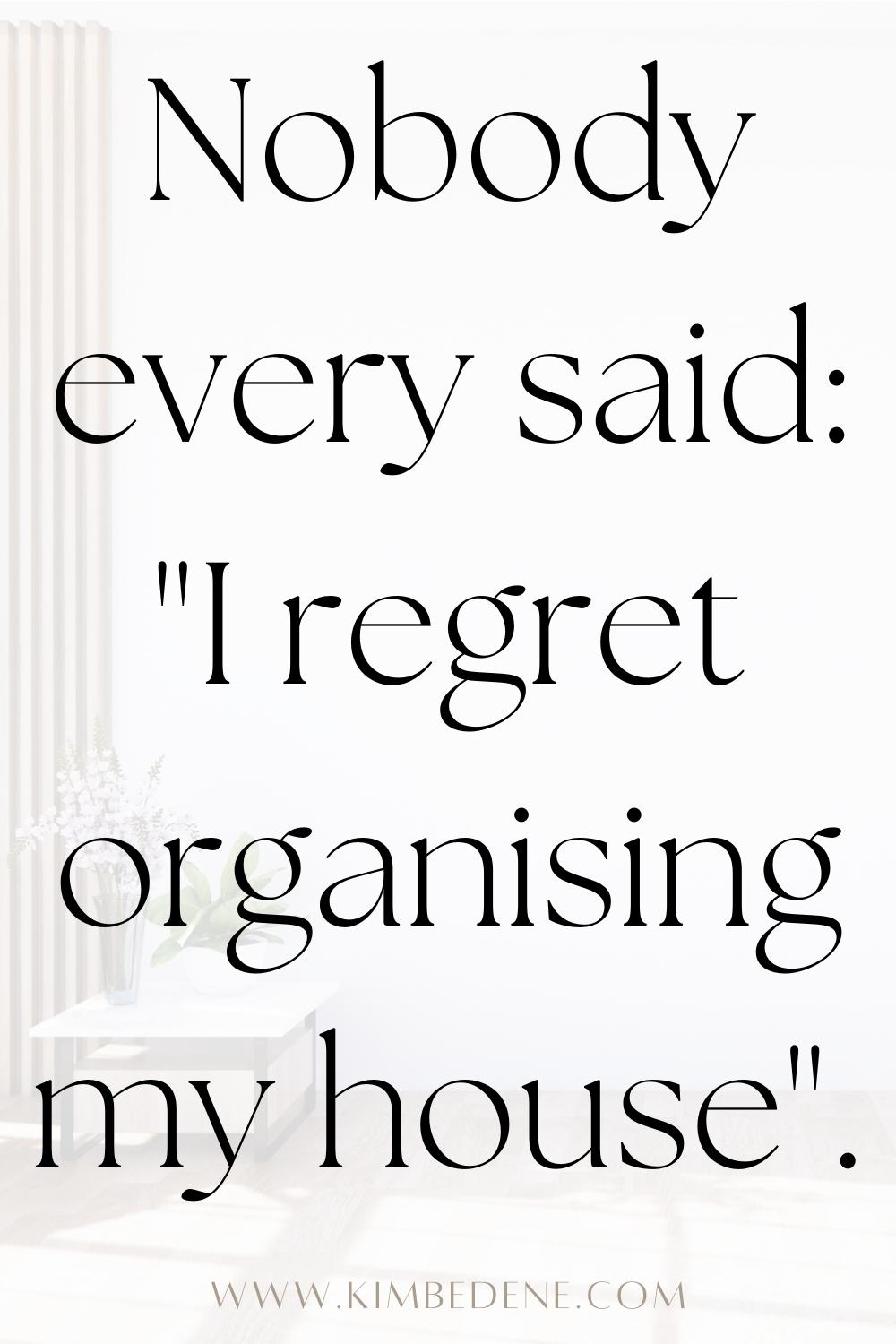
1. SELL THE FURNITURE
When we moved into our new house, there was a big 3-meter closet in the bedroom. Of course, not wanting to spend money renovating we simply put everything in without giving it much thought. Over time, those spacious parts of the closet weren’t as empty anymore, so I knew that we had to reorganise the wardrobe.
We decided to sell the middle part so we were left with a 1,75-meter closet (1 meter is for me, and 0,75 for my husband), which to this day works great!
If you ever heard about using smaller plates for weight loss (if we have a big plate one portion might seem small and we get the impression we didn’t eat as much, but with a tiny plate, the feeling is entirely different!) you might know what I’m talking about because a similar thing can happen to us, but with empty spaces in our home.
I rationally knew I have more than enough stuff but seeing empty parts of my wardrobe day after day slowly made me think that my wardrobe is a bit empty and I need some new stuff. So be careful with empty drawers, closets and cabinets because there is a chance you’ll fill them in the near future.
That is why it’s best to let go of any unwanted furniture – you’ll have less to clean, and organise and your room will have some extra space. Plus, you can get some money back if you sell it.
You can use the same approach for your hangers – decide how many pieces of clothing you want to ultimately have and let go of the rest. I kept around 15 empty hangers for my future purchases and once I filled them all I started shopping by “one in, one out” rule.
Another thing you can consider is to officially declare some drawers or cabinets as empty. Tell it to your partner and family, and make a pact with yourself to not fill them with anything! But there is an even better way around this, and that brings me to the next point.
2. SPACE THINGS OUT AND CREATE YOUR OWN BOUTIQUE
Sometimes we can’t just let go of the furniture because it’s built-in or we’re renting it, and that isn’t the option. But don’t worry, there is a brilliant solution for this as well, and it’s very simple, think about your home as a boutique.
If you think about cute boutiques – they have items displayed in a lovely way, so everything looks inviting and calming. We can apply the same principles to our home.
Instead of cramming everything into one drawer, we can put it in multiple drawers and nicely arrange it, so we get the feeling that our cabinets are full, thus giving us the impression we have more than enough stuff.
And because items have some space between them and are neatly placed, we’ll also feel joyful every time we open the drawer, cabinet or closet. This is my favourite tip of all, and I apply it wherever I can because it really does make a difference.
Even though we sold a good portion of our bedroom closet, we still utilised this tip, because our wardrobe was still a bit empty. I also applied this rule in our kitchen, bathroom, office and anywhere where it made sense. I told you, I love this idea! 😉
So here are some pictures of how we rearranged things in our home:
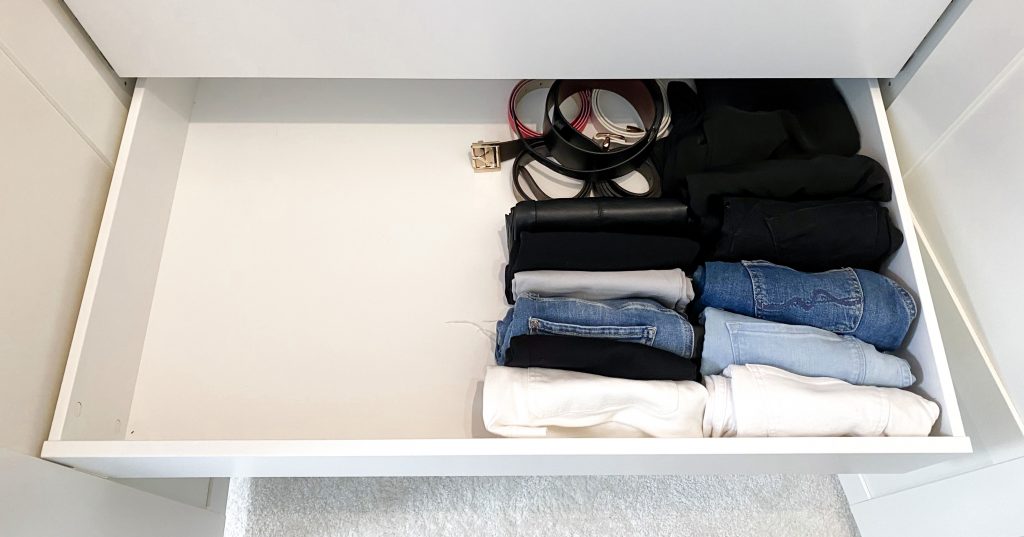
This drawer has the same amount of stuff in both pictures. Compare the top and the bottom picture to see the difference between spacious organising vs. putting everything together.

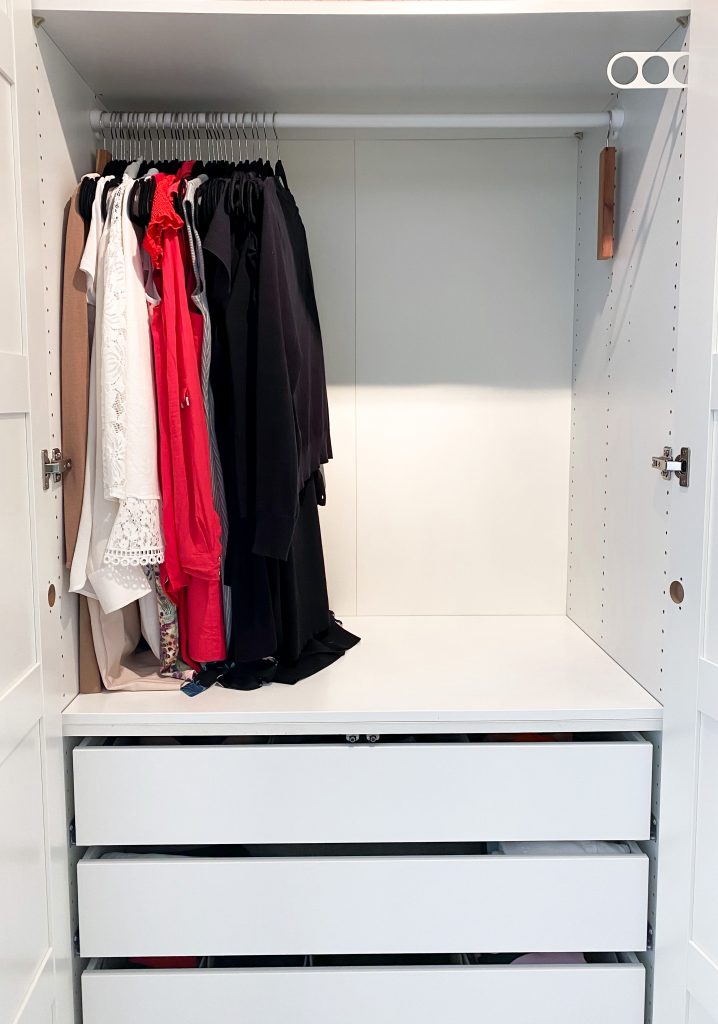
The same goes for the main wardrobe. Same amount of stuff, one is spaced out vs. the other is closely organised.
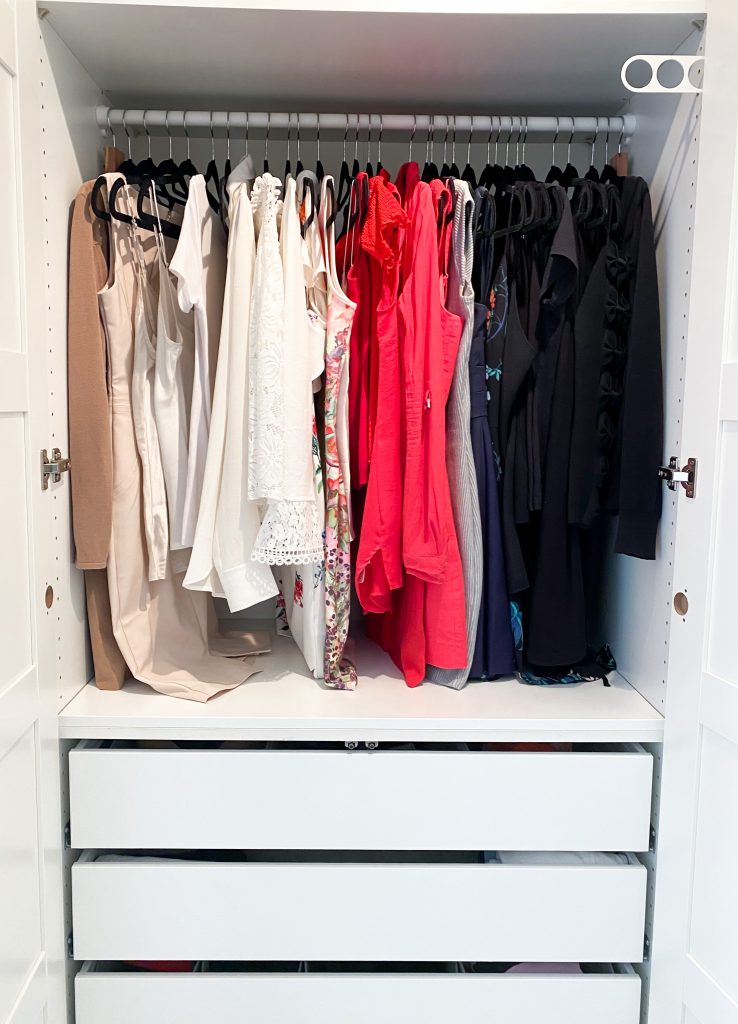
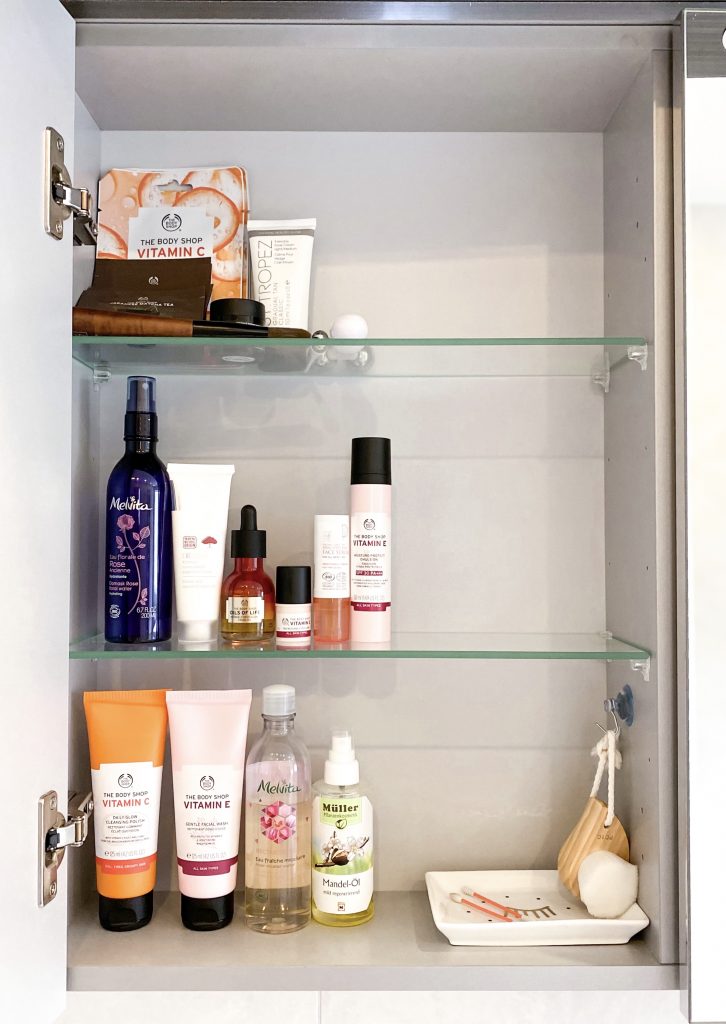
I applied the same rule to our bathroom cabinet. Compare the pictures to see the difference.
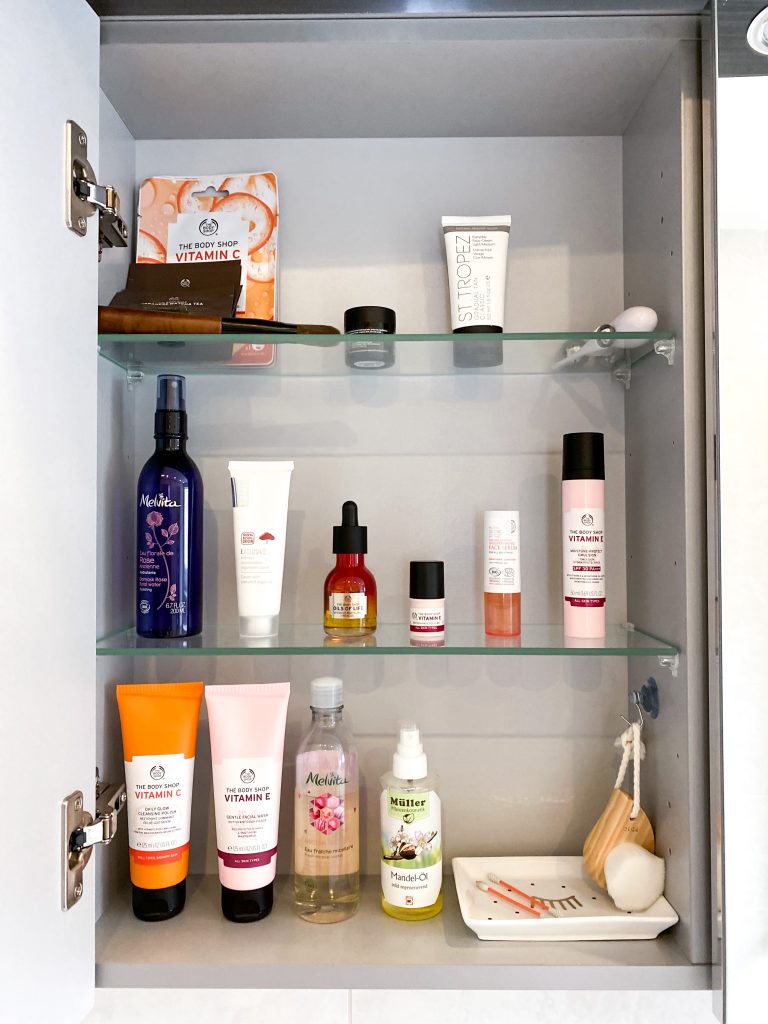
So have fun with this one and pretend that every part (hidden or not) is some sort of a luxury display 😉 The goal is to feel like your spaces are filled but in a spacious, organised way.
3. SURFACES ARE NOT FOR STORING
This tip is all about our flat surfaces; the kitchen island, bookshelves, all sorts of tables, shelves and chests of drawers. We all know they’re a magnet for clutter and we often justify storing things on there because of lack of space.
But after decluttering our home, we have to make a conscious effort to move those things inside. That will automatically fill up our empty space inside, plus our rooms will feel peaceful and joyful.
After you make that transition and you reorganise everything, then all you have to do is declare a surface as ‘clutter-free’, and if anyone leaves anything on there for too long, they must put a penny in a “clutter jar” 😛
Of course, having some decor or items you use very frequently on the surface is not a problem, but it has to be preplanned and designed in a way that it makes you feel serene. Again, it’s all about quantity here, and from my experience, I would say keeping around 3-5 items per surface is the absolute max.

We have an open bathroom cabinet that we use as a nice display of perfumes that get used on the daily basis, plus in the middle, there is a bit of a decorative candle holder, which we use for used reusable cotton pads.
Clearing your surfaces is one of the quickest ways to feel completely at peace, so I suggest you do your best with this one and see how little you actually need. But organising can only take you so far, so we have to look at the last point.
4. EMBRACE THE EMPTINESS
This is probably the most important tip when it comes to decluttering because the more we let go, the more space we create and we need to learn to embrace it.
So after every decluttering session, give yourself some time to adjust to the newfound emptiness – this mostly applies to the room itself and less to the insides of the cupboards and closets. When you clear the surfaces, sell a piece of furniture, remove the extra decor etc. give it some time so you get used to it.
Whenever we move something out of sight, we might perceive the space as blank at first, but only because we’re used to having more stuff there. Yet after some time passes, we adjust to this new layout and the emptiness isn’t there anymore.
From my experience, it takes a minimum of 2 weeks to a month before we completely adjust to the change. So make a little deal with yourself you’ll wait a month before adding anything, and if you still feel like the room is too empty, feel free to play with that area a bit more (and then, of course, wait for another month, haha).

And if you’re still not sure how many things you should keep, then check out this post where I explain it all with the ice cream examples.
If you enjoyed this post, I’d be very grateful if you’d help it spread by sharing it! Thank you 😉

Oh, I never thought about that. What I care about is having a neat room/closet. Anyways, this is an interesting read.
Author
Oh yes, there is nothing better than a neat room, hehe 😉 I’m glad you enjoyed the post and that you found it interesting.
I have have never thought about empty spaces in this way before and I found your article fascinating and it’s making me wonder what the evolutionary origin is behind this so thank you!
I’m glad you liked it! When I realised how we perceive empty spaces, it was definitely an eye-opening experience. It just shows that we are very fascinating creatures, haha 😛